Apentema:
 A small oprerenten. A fairly small sonorous drum used as a support drum. And as master drum in adzewa, apoc and kurunku music. Played by hands. Also used in pairs as a talking drum. Also called Ampae. Traditionally skinned with antelope but now cow skin.
A small oprerenten. A fairly small sonorous drum used as a support drum. And as master drum in adzewa, apoc and kurunku music. Played by hands. Also used in pairs as a talking drum. Also called Ampae. Traditionally skinned with antelope but now cow skin.
Atenteben:
Bamboo pipes. Bamboo flutes played with the drums, song and on their own.
Atumpan:
 A pair of male, female talking drum. Played by the master drummer in Adowa and as part of the ensemble in Fontonfrom. They were traditionally skinned with elephant ear skin (many years back) and now antelope or cow skin. Played in pairs Male drum to your left and female to your right on a frame that tilts the drums away from you. You play standing behind the drums with two long sticks made from the joint of a branch so that it is in the shape of a 7 . The Atumpan although traditionally Ashanti drums have become very popular and so found in many different settings within other tribes. They are the Ashanti talking drums. Many of the rhythms played are come straight from spoken TWI (Ashanti Language) for example at the beginning of Adowa the lead drum calls the name of the bell before it starts to play. Sold in our Adowa set.
A pair of male, female talking drum. Played by the master drummer in Adowa and as part of the ensemble in Fontonfrom. They were traditionally skinned with elephant ear skin (many years back) and now antelope or cow skin. Played in pairs Male drum to your left and female to your right on a frame that tilts the drums away from you. You play standing behind the drums with two long sticks made from the joint of a branch so that it is in the shape of a 7 . The Atumpan although traditionally Ashanti drums have become very popular and so found in many different settings within other tribes. They are the Ashanti talking drums. Many of the rhythms played are come straight from spoken TWI (Ashanti Language) for example at the beginning of Adowa the lead drum calls the name of the bell before it starts to play. Sold in our Adowa set.
Dawuro:
Donno:
 Hour glass drum played by the stick and armpit control technique. This drum is traditionally from the North of Ghana from the Dagomba tribe, and seen in the West as the Talking drum of Africa. But in the Ashanti tribe it has been imported into the music as they just like it as a support drum, adding that extra dimension to their music.
Hour glass drum played by the stick and armpit control technique. This drum is traditionally from the North of Ghana from the Dagomba tribe, and seen in the West as the Talking drum of Africa. But in the Ashanti tribe it has been imported into the music as they just like it as a support drum, adding that extra dimension to their music.
Firikyiwa:
 Castanet used mainly in the music of popular bands and in the music of the Apoc ceremony of Northern Ashanti. Also found through out the South of Ghana in the Ewe and Ga tribes. Often heard in markets accompanied by a singer plying their trade.
Castanet used mainly in the music of popular bands and in the music of the Apoc ceremony of Northern Ashanti. Also found through out the South of Ghana in the Ewe and Ga tribes. Often heard in markets accompanied by a singer plying their trade.
Fontomfrom:
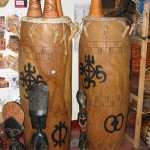 The name of the largest of the Ashanti drums, often five foot high and 2 foot wide. Played in pairs by two players. It is also the name of the largest and most important of all state drum orchestras. Its ensemble includes a pair of Fontomfrom drums, the atumpan talking drums and a number of smaller drums.
The name of the largest of the Ashanti drums, often five foot high and 2 foot wide. Played in pairs by two players. It is also the name of the largest and most important of all state drum orchestras. Its ensemble includes a pair of Fontomfrom drums, the atumpan talking drums and a number of smaller drums.
Brenko:
A support drum found in the Fontomfrom and Kete ensembles. It is a bottle shaped drum of similar size to the apentema. Played with stick and hand. Sold in our Ket
Kwadum:
The Master drum for Kete orchestra. Played with a pair of sticks as the Atumpan sticks from the joint of a branch shaped as a 7 .
Petia:
Support drum used in Adowa . High pitched and played with two straight sticks. Sold in or Adowa and Kete sets.
Mma:
Stick clappers. Used in apirede, and sikyi. Made from wood or Bamboo.
Mpintintoa:
Gourd drum, traditionally from the north of Ghana. Made from a gourd, goat skin and leather rope.
Nkonta:
Drum sticks
Nsoaa:
Drum pegs
Ntoma ben:
Support drum
Ntwamu:
General name of a support drum. Twa mu means: to cross . Hence any drum that crosses the beats of other drums.
Prepensua:
 A box Piano with three to five notes made of bamboo or metal. Notes played with fingers. A distant relation of the mbira, but used more as a bass rhythm within drumming, singing ensemble.
A box Piano with three to five notes made of bamboo or metal. Notes played with fingers. A distant relation of the mbira, but used more as a bass rhythm within drumming, singing ensemble.
Seperewa:
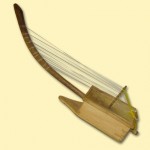 An old Akan harp now replaced in many areas by the western guitar. Making a come back within the last years. Played in a similar way the Senegalese Kora but much smaller and the sound box is made from wood.
An old Akan harp now replaced in many areas by the western guitar. Making a come back within the last years. Played in a similar way the Senegalese Kora but much smaller and the sound box is made from wood.
Torowa
Gourd rattle. Made from hollowed out gourd with seeds on the outside tied in a net.


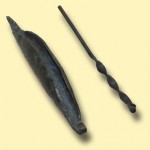

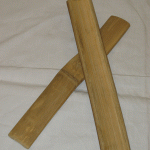
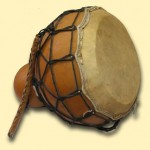
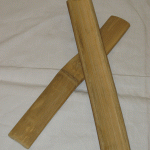
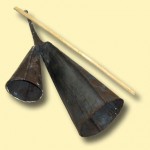

The info was helpful
Very good work done. please try and describe these instruments in Twi
Vim dey love this
Medaase pa for this lovely website you’ve put together. The explanation of the cross-rhythm in “Ntwamu” is really brilliant and I will have to use that – I am just about done with coursework for PhD in Ethnomusicology at the University of North Texas.
I have a question if you wouldn’t mind responding I would really appreciate it. While my main focus is on Ghanaian music, particularly drumming but getting much more into popular musical forms, I’m also interested in the diasporic elements of African music. The preprensua is found all over the Caribbean but the presence of it in Ghana is still, to me, a mystery as to its origins. It seems too closely related to the Caribbean to not have any link, and conventional wisdom would say that it was rather Ghana who was inspired by the instrument when it came with Afro-Cuban instrumentation. But I have a sneaking suspicion that the construction of the preprensua is of Akan origin in the first place. The famed rhumba box is generally considered to be from the mbira. Mbira east/southern African origins doesn’t make sense geographically or in the construction of the instrument.
Long story short, in your experience, have you heard of any origin explanation/story of the prepensua? Thanks so much!
Very insightful. Please do well to add an Akan name for xylophone
A very good material to support research work. However, I would like to suggest that the history of it’s origin and description of make be added.
Nice and very interesting instrument
Hello! I am based out of Minneapolis, MN and am a musician by trade. I was working on trying to reconnect with my roots and looking through your list. Are you aware of any wind instruments that may have been played in Ghana. Specifically by the Fante people? I’ve traced some of my lineage back to Accra, specifically the last name Afore (anglicized its Afful). By trade I’m an oboist, and while I can do percussion I’d like to know if wind instruments are part of the heritage. Thanks!
Please I need the functions of trowa,adawuraa
Medaase